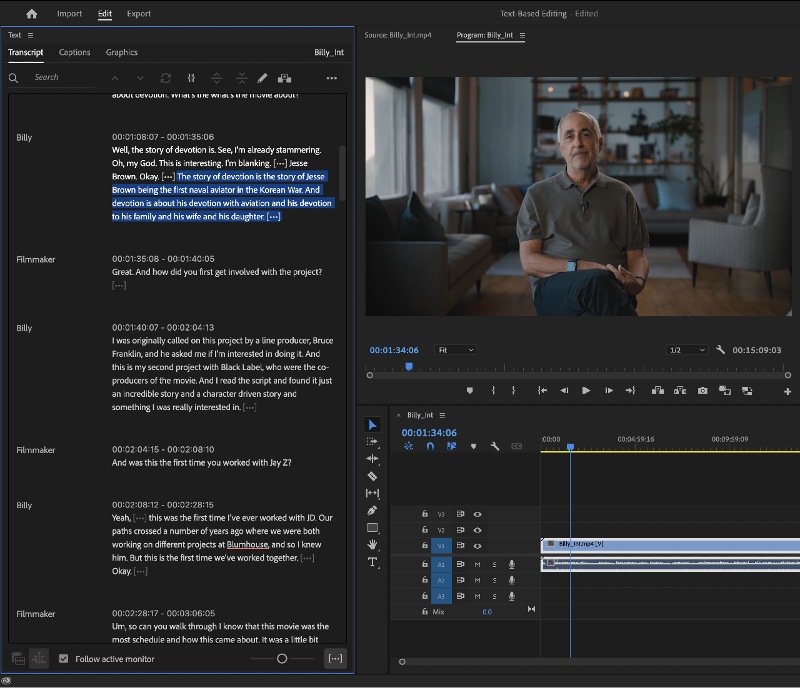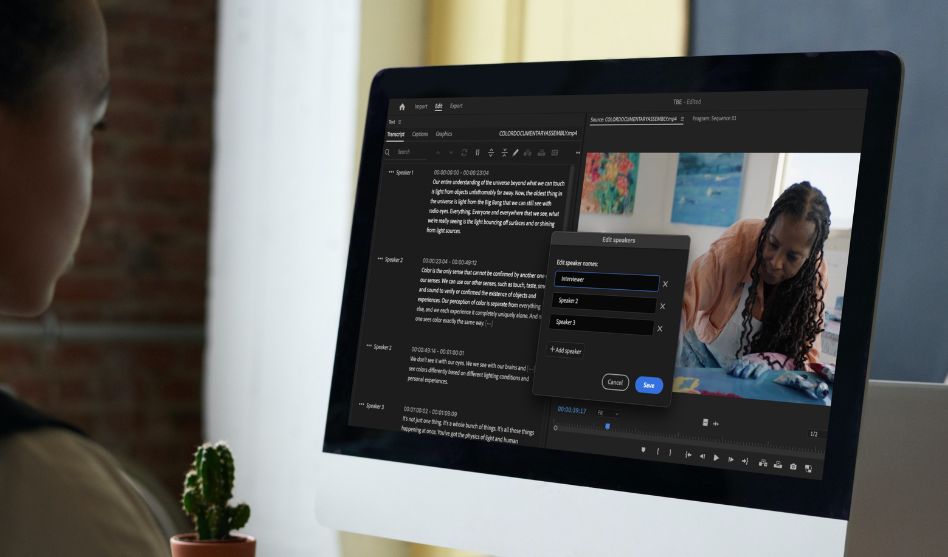An indie film editor stands in the middle of a great ballroom wearing an outfit that looks like the Tasmanian Devil ripped through a 1740s period film’s prop department. He holds a glass to his mouth with his pinky out and takes a sip.
“Oh, that’s wonderful. I detect a tartness of supreme accuracy, notes of clarity, and undertones of efficiency for text-based video editing.”
You nailed it, ballroom costume transcription-taster guy.
Digital Anarchy’s Transcriptive came out in 2017 driven by its Speechmatics speech recognition technology and has continued to update its precision and accuracy for a tool embraced by filmmakers. A 2021 Statista survey claimed that Rev.ai had the highest accuracy rate at the time “among leading companies” with an 86% accuracy rate. Digital Anarchy published its own study in November 2021 that claimed the latest version of Speechmatics had 94.63% word accuracy for a reading of the bible.
Since then, Speechmatics raised another $62 million in 2022 to improve its services and Adobe Premiere Pro announced in its May 2023 round of updates that the Adobe 23.4 version base subscription was now equipped with text-based video editing.
This prompts us to go, “Huh, maybe growing filmmakers could use a rundown on Transcriptive and text-based video editing.”
Whether you’re editing footage enunciated with the clarity of a Cate Blanchett narration or a bog troll with peanut butter in its mouth, it all requires a transcription. Here’s what Transcriptive Rough Cutter offers as a film editing tool and where Premiere Pro’s text-based video editing stands in 2023.
First off, how do creators use text-based editing?
Scott Simmons of provideocolition.com discussed a Twitter survey he posted in April 2023 asking how many creators integrated text-based editing into their workflow in the last couple of years. From a sample size of 63, the result was 55.6% (35 voters). That’s…not an overwhelming majority with an affinity for text-based video editing.
Here’s a quick basic delineation: The transcription process occurs as a cloud-based system automatically interprets a chunk of audio or video and regurgitates it as a written transcript. For Transcriptive, this works as a paid plug-in for Adobe Premiere Pro. The text-based editing function, now built-in with Premiere Pro, allows a user to copy, paste, and rearrange chunks of a video by editing this generated transcript rather than the video itself. Simmons on the progression of text-based editing:
Localized transcription into your editing application has been a great productivity tool. However, taking transcriptions one step further by letting the editor create an edit from the text is a revelation.

Photo: adobe.com
Transcriptive Rough Cutter: the advancement of AI-based transcription
Each new iteration of Transcriptive (or any other transcription tool) means increased accuracy in a growing number of languages at a decreased time. Transcriptive Rough Cutter was released in 2021 and is driven by Digital Anarchy’s Transcriptive A.I. tool. Here are a few key ways Rough Cutter advanced its integration with Premiere Pro for text-based editing:
- Enabled batch projects to transcribe multiple files at once in Premiere Pro
- Allowed parallel processing to submit multiple files at once and decrease transcription time
- Supports multicam projects so creators can upload diverse transcripts at once and have them seamlessly integrated into the edit
How Transcriptive integrates with Premiere Pro in 2023
Since its release, Rough Cutter has held its price steady at $199 per license, with the use of Transcriptive A.I. transcriptions available for $0.04/minute. Transcriptive users within Premiere Pro also have access to PowerSearch, which is a metadata search panel in Premiere that lets the creator search hours of audio footage to quickly find a sound bite. The collaborative aspect is that editors can share their work through a Transcriptive.com web panel subscription or do it right within the Premiere Pro panel – the ideal circumstance for low-budget independent filmmakers.
Premiere Pro takes the video editing workflow another step forward in 2023 with its recent base integration of text-based editing. The Premiere Pro “feature summary” for May 2023 announced that users could create rough cuts by copying and pasting text clips right in Premiere, and that it now includes transcription support for Danish, bringing Premiere Pro’s supported languages count to 17.

Photo: adobe.com
Doesn’t Premiere Pro’s innate transcription upgrade make Rough Cutters obsolete?
This depends on how expansive of a transcription tool you want to use. As we noted previously, Rough Cutters includes auxiliary features like batch processing. The main contrast would be in accuracy: Adobe Premiere Pro claims that transcription within its text-based video editing is “industry standard or better.” Digital Anarchy claims that Transcriptive is “97% accurate with Transcriptive A.I.” Digital Anarchy posited in 2021 that for every 1% of additional accuracy translates to about 15% less incorrect words – a huge discrepancy.
Improved efficiency for any editor
You might be a filmmaker with a wild look in your eye, driving a mad snorting horse toward editing perfection (think Christopher Walken in Sleepy Hollow). Text-based video editing isn’t preferable for this creator because 97% accuracy isn’t good enough, and it doesn’t feel pure.
For the creator who wants to improve efficiency with a transcription tool and the power of text-based video editing, they may stand in that ballroom in a 1740s period piece costume with a glass of automated transcription, saying:
“I sure like this taste.”





